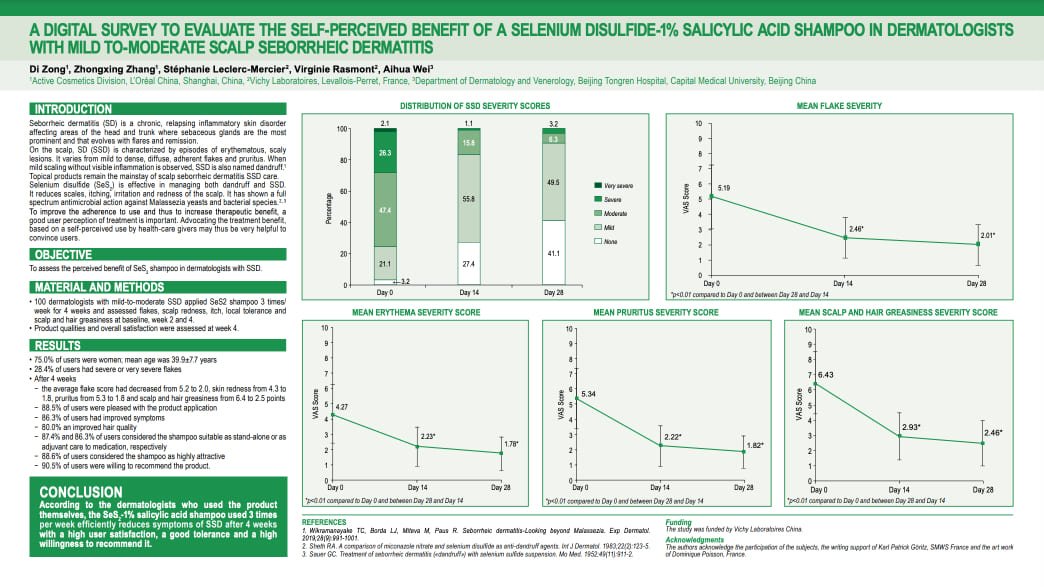L'Oréal Dermatological Beauty Pro is a digital community empowering healthcare professionals to improve their daily practice of dermatology through cutting-edge research, science and education on skin and hair care.
A digital survey to evaluate the self-perceived benefit of a selenium disulfide-1% salicylic acid shampoo in dermatologists with mild to-moderate Scalp Seborrheic Dermatitis
Di Zong, Zhongxing Zhang, Stéphanie Leclerc-Mercier, Virginie Rasmont, Aihua Wei
- 10min (reading time)
- Mar. 2023
- Supported by

INTRODUCTION
Seborrheic dermatitis (SD) is a chronic, relapsing inflammatory skin disorder affecting areas of the head and trunk where sebaceous glands are the most prominent and that evolves with flares and remission.
On the scalp, SD (SSD) is characterized by episodes of erythematous, scaly lesions. It varies from mild to dense, diffuse, adherent flakes and pruritus. When mild scaling without visible inflammation is observed, SSD is also named dandruff.1 Topical products remain the mainstay of scalp seborrheic dermatitis SSD care.
Selenium disulfide (SeS2) is effective in managing both dandruff and SSD. It reduces scales, itching, irritation and redness of the scalp. It has shown a full spectrum antimicrobial action against Malassezia yeasts and bacterial species.2,3
To improve the adherence to use and thus to increase therapeutic benefit, a good user perception of treatment is important. Advocating the treatment benefit, based on a self-perceived use by health-care givers may thus be very helpful to convince users.
